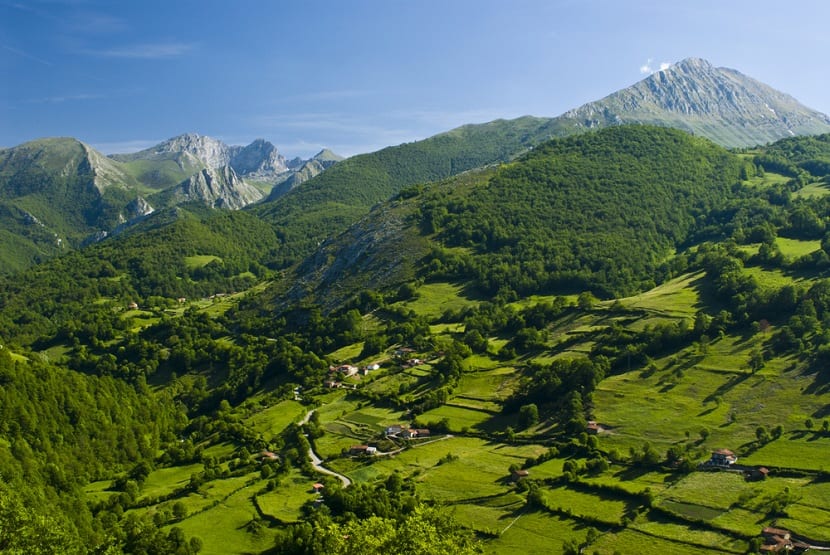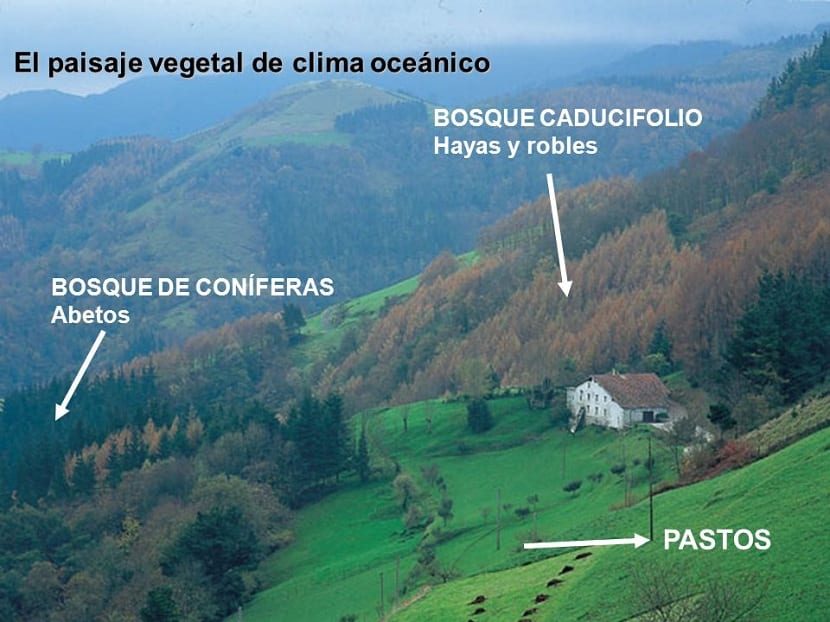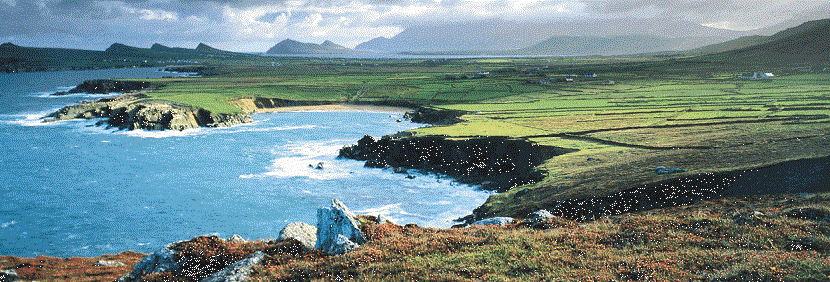
In a previous article we were seeing what are the various types of climates that exist. We did a general summary listing some of the main characteristics of each one. However, today we are going to go into detail on one of them. Its about Oceanic climate. It is also known as a maritime climate and is mainly characterized by having cold or mild winters without having hot summers as we are used to.
In this article we will talk in depth about the oceanic climate and its characteristics. In addition, you will be able to know the areas of the world where this type of climate occurs. Do you want to know more about it? You just have to keep reading.
Characteristics of the oceanic climate

This type of climate has the characteristics of not having a clear difference between the seasons of the year well represented. This means that the temperature range in which we move is always similar. Temperatures are not usually very high, quite the opposite. Winters are generally cold or mild, and summers are still mild and rainy.
These are usually areas of the world where the sky is covered with clouds most of the year. They are areas where the sun is missed. For those of us who live in an area like Andalusia and the Costa del Sol, it is a luxury to have so many sunny days a year that we do not value. Summer days here are unbearable, dry and very hot. However, for a foreigner who comes from one of these places where temperatures are always low, it is a luxury.
The best-known cities in the world that include the oceanic climate are Dublin, London, Bergen, Bilbao, Paris, Brussels, Amsterdam, Hamburg, Melbourne and Auckland. The oceanic climate tends to have a lot of storm activity because it is located in the west wind belt. The cloudiness, as we have mentioned, is always constant and on many occasions they move to heights very close to the earth's surface.
The temperature range is usually very low, so there are usually neither very hot nor cold fronts.
Temperatures and rainfall

Photograph by Garry Knight
In these types of climates, winter temperatures make them quite cold and summers very mild. Anyone who has visited London can confirm it. They are skies usually covered with clouds with temperatures close to 10 degrees in the middle of March and with extremely cool summers.
The average temperature in these areas during the coldest winter months is 0 degrees. This tells us that temperatures are below zero for many days. On the contrary, during the warmest month we find average temperatures below 22 degrees. This indicates that summers are very mild and that it would correspond to what in Andalusia would be the beginning of spring.
As for rainfall, they are quite reliable and well distributed throughout the year. Reliable refers to the fact that they are not usually torrential or harmful as is often the case in Spain and also, they guarantee good water resources. It is mainly in the form of rain, although some areas experience snowfall every year in winter. Continuous cloudy conditions are very common. Another example of a city covered in clouds is Seattle. Seattle is covered in clouds 6 out of 7 days a week.
The months where the rains extend the most are between October and May. It is normal for these areas to experience at least one snowfall per year. If cities with this type of climate are located with latitudes further north, they will frequently have more snowfall per year.
Causes of oceanic climate

We are going to try to explain the why of this climate. We must bear in mind that the cities where this climate is experienced are close to large bodies of water such as the oceans or large lakes. These bodies of water are crucial in shaping the characteristics of the climate. In areas where the sea is close, temperatures do not vary much, as the winds that come out of the sea regulate temperatures.
This is the reason why in an indoor climate the temperature range is so extreme, with very pronounced seasons of the year. To understand this better. In northwestern Europe we find the current that comes from the Gulf of the North Atlantic. Scientists think that is the reason why there are milder winters in all areas near the west coast.
The oceanic climate is not always found in coastal locations, but also in some parallels that have mid-latitudes. Other currents that affect climates are the polar jet stream. This current causes low pressures, storms and fronts in the localities where it occurs. When the jet stream is most active in the fall and winter, the oceanic climate is responsible for creating frequent fogs, cloudy skies, and continuous drizzle. These are the characteristics that predominate in cities with this type of climate.
On the contrary, in other climates like the Mediterranean high pressures during the warmer times of summer and spring, push the clouds away from the rains and maintaining stable, hot and very dry situations.
Subtropical variation

There are some variants of this oceanic climate. We find the subtropical that occurs in areas with high altitude between the tropics. Subtropical areas with this climate have less rainfall during the winter season and more sun. It is normal to see that in these areas there is always a spring time with mild and pleasant temperatures.
They do not usually have snowfall in winter. The average temperatures in winter are above 0 degrees (in some years average temperatures of 10 degrees are recorded) and in summer they remain somewhat higher than 22 degrees as we saw before. This variety of oceanic climate It occurs in Copacabana, in Bolivia, Sichuan and Yunnan.
I hope I have helped to better understand the oceanic climate and why it originates.